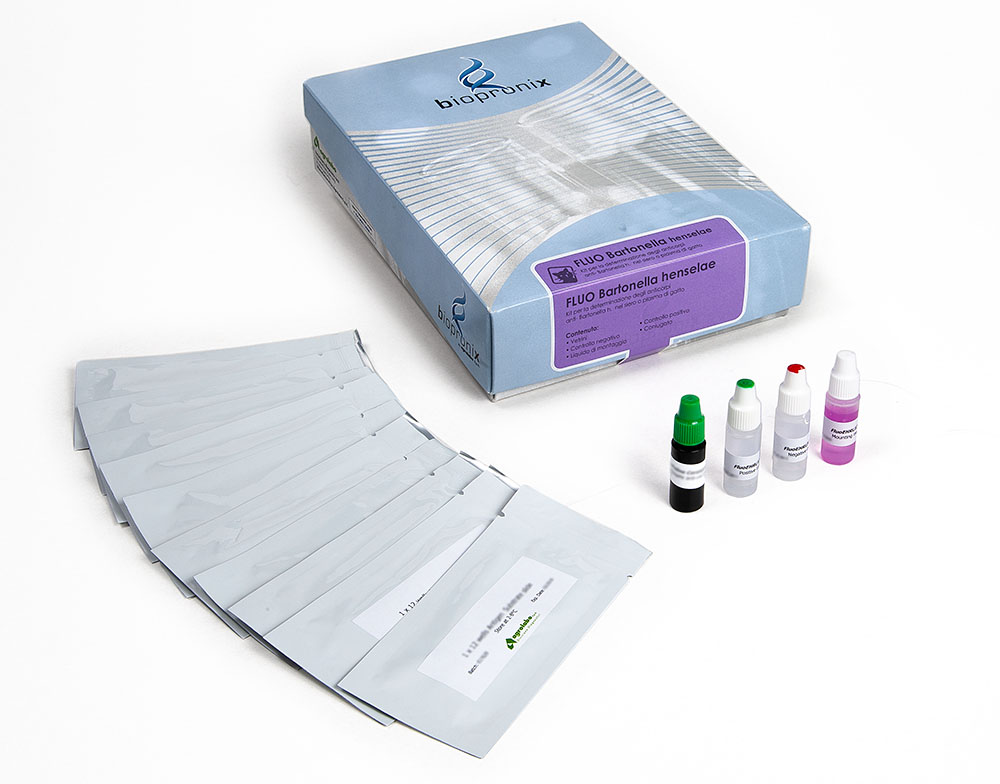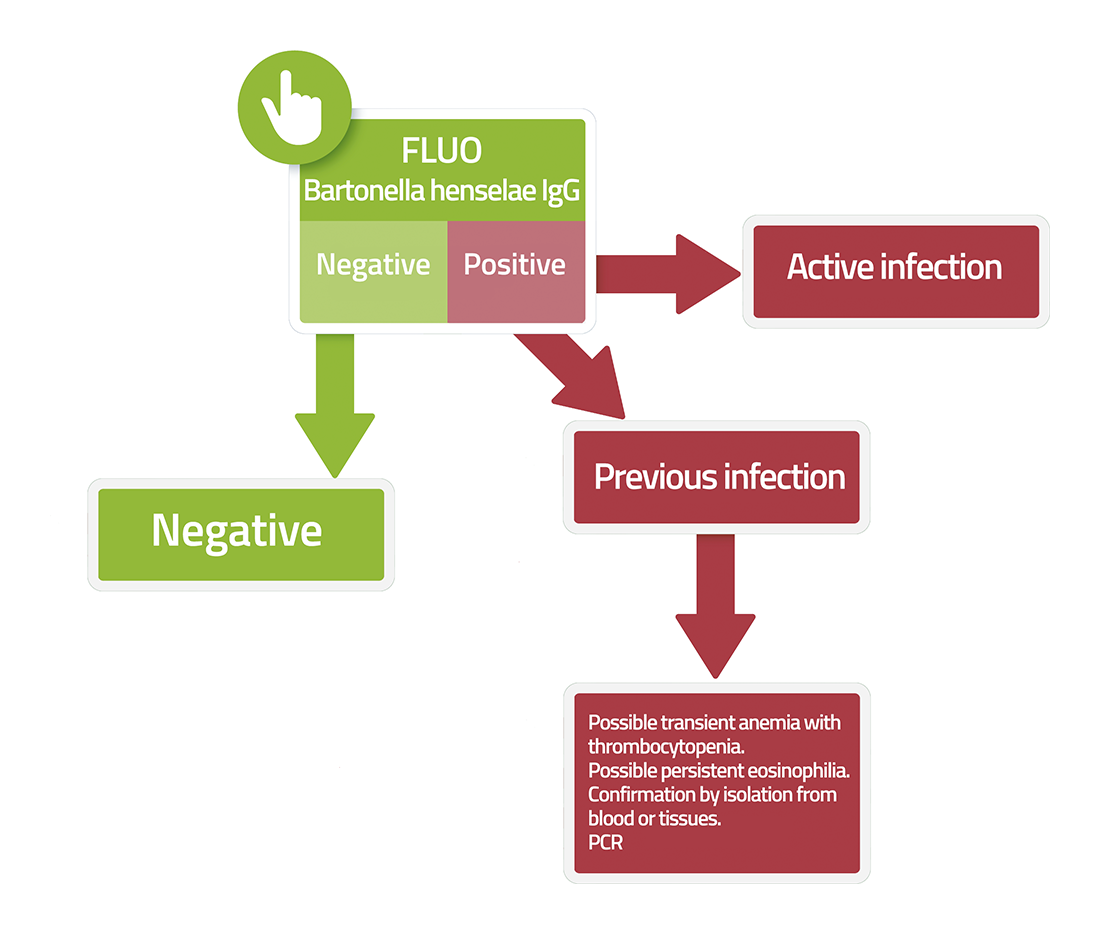FLUO BARTONELLA henselae
IFA kit for the detection of IgG antibodies to Bartonella henselae
Fluo BARTONELLA henselae is a test based on the immunofluorescence technique for the detection of anti-Bartonella henselae IgG antibodies in cat serum or plasma samples.
Bartonellosis in cats is an emerging and important zoonosis even if still little known.
Bartonellosis is a vector-borne disease caused by the Gram-negative hemotrophic bacterium Bartonella henselae: a facultative intracellular parasite of erythrocytes and endothelial cells.
The main carrier of Bartonella h. for the cat is the flea Ctenocephalides felis, not only the insect, but also the faeces themselves are responsible for the infection. The Ixodes tick also appears to be a vector for Bartonella.
All cats can be infected but young animals under the age of 2, cats with access to the outside environment, stray cats and living in colonies are more predisposed.
The organism infects erythrocytes and endothelial cells causing persistent and often relapsing bacteremia due to re-exposure to the parasite. Most of the cats infected with Bartonella h. show no clinical signs. However, following the persistence of the infection, chronic diseases such as uveitis, endocarditis, stomatitis, urinary tract diseases may occur.
The infected cat can infect humans through scratches, bites or licks and cat scratch disease usually has a benign course with regional lymphadenopathy, fever, malaise, myalgia, arthralgia, skin rashes and weight loss. More severe symptoms and clinical course may develop in immunosuppressed individuals and, in some cases, also in immunocompetent individuals.

